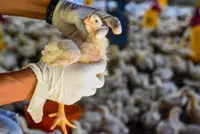The Philadelphia skyline from the Cooper River in South Jersey in 2022. In spring and fall, lighted skyscrapers can attract, and injure, migrating birds. Photo: TNS
Philadelphia, in the United States, lies in a major path for millions of birds navigating the Atlantic Flyway, an especially busy avian skyway each spring.
Starting April 1, some of Philadelphia’s most iconic skyscrapers – Comcast Technology Center, Cira Centre, and Liberty Place – will turn off, or turn down, their lights to help prevent birds from colliding with buildings under Lights Out Philly, a programme started in spring 2021. Scores of buildings will participate.
Already a subscriber? Log in
Save 30% OFF The Star Digital Access
Cancel anytime. Ad-free. Unlimited access with perks.





